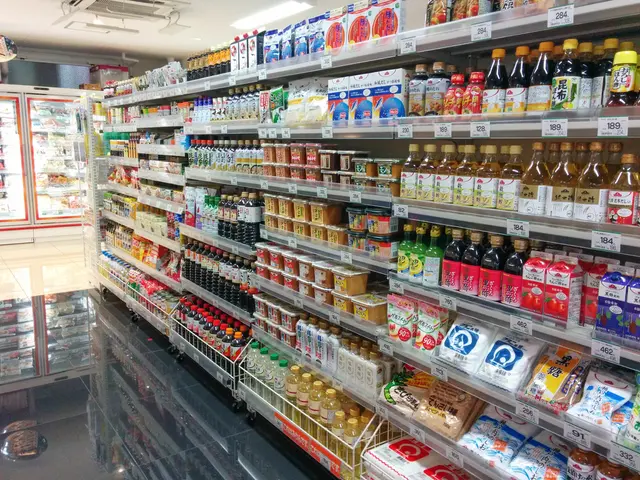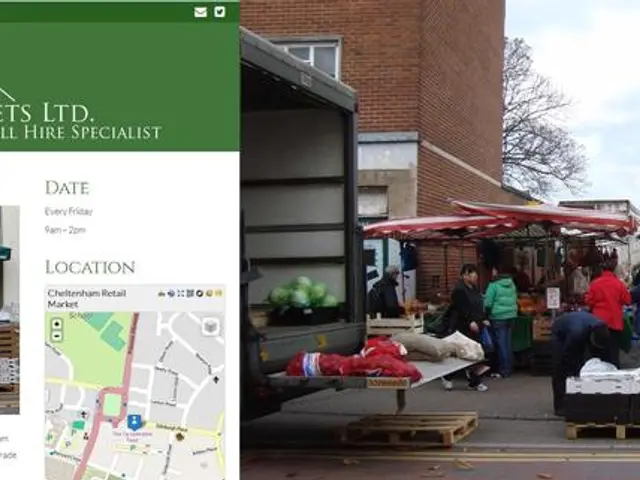Soft Sales Indicators Signaling Potential Shifts in U.S. Retail Industry Landscape
Retail Giant Target Faces Sales Slump, Indicating Potential Economic Woes
Target, often viewed as a barometer for the U.S. economy, has issued a grim forecast due to sluggish sales, spelling trouble for both the retail sector and the nation's economic landscape.
Despite its reputation for competitively priced merchandise and wide product selection, Target's recent dip in sales reveals telling trends in consumer spending patterns. Here's a deep dive into what these warning signs could mean for Target and the future of retail in America.
The Tightening of Consumer Wallets
Target reported less-than-expected sales in February 2025, notably in discretionary categories such as clothing and home goods. Analysts attribute this slowdown to various factors:
- Economic Anxiety: Looming inflation and rising interest rates have made consumers reluctant to splurge on non-essential items.
- Money Prioritization: Shoppers are prioritizing necessities such as food and utilities over discretionary purchases.
- Seasonal Factors: Unusual weather patterns, like persistent cold spells, have dampened demand for spring merchandise.
While these issues are not solely Target's, they reflect a growing economic stress that goes beyond the retail sector. Consumer spending, contributing to approximately 70% of U.S. GDP, has exhibited signs of stagnation despite wage growth in certain industries.
Pricing Tug-of-War
To combat sluggish sales, Target has leaned on promotions and price cuts:
- February's "4-Day Sale" slashed prices by up to 40% on clothing and activewear.
- Seasonal promotions, such as Valentine's Day deals, offered savings of up to 30%-40% on essentials.
Although these tactics have previously driven foot traffic, they come at the expense of reduced profit margins. Retailers like Target must find ways to keep prices attractive while safeguarding profits.
Retail's Rearrangement
Target's struggles mirror larger industry trends that could drastically alter the retail sector:
- Heightened Competition: Discount stores like Walmart and online titans continue to dominate the market by offering lower prices and speedier delivery options.
- E-Commerce Expansion: While Target has experienced growth in online sales, it faces stiff competition from digital-first platforms.
- Adjustment to Consumer Needs: The rise of value-conscious consumers means retailers need to innovate to retain customers without sacrificing profits.
Watching the Economic Pulse
Target's performance provides a snapshot of the U.S. economy's overall health. Key indicators to track are:
- Consumer Confidence: A dwindling sense of confidence often foreshadows reduced spending power.
- Inflation Rates: Persistent inflation could further strain household budgets.
- Employment Rates: Job security plays a significant role in consumers' spending choices.
Target's Path Forward
To tackle these challenges, Target has several strategies in the works:
- Superior Shopping Experiences: The company plans to upgrade its stores with improved layouts and digital integrations.
- Loyalty Programs: Initiatives like "Target Circle" aim to foster customer loyalty with exclusive discounts and perks.
- Product Diversification: Expanding private-label lines may help Target compete better on price while maintaining product quality.
These moves will require time to reap benefits, especially in the face of ongoing economic instability.
Conclusion
Target's weakness in sales signals significant hurdles for the retail sector in 2025. As consumers tighten their pursestrings and focus on essentials, retailers must be nimble to avoid losing market share.
For Target, this means balancing promotions with lasting investments in customer experience and digital transformation.
The implications stretch beyond retail; if consumer spending continues to cool, it could signal deeper challenges for the U.S. economy as a whole.
Retailers like Target will remain crucial gauges of how Americans are navigating this unpredictable economic landscape.
Further Reading
- U.S.-China Trade Tensions Intensify, Resulting in Additional Tariffs on Farm Products
- Indian Air Conditioner Stocks Soar as Demand Increases in Warming Climate
- Amidst an economic slump in the U.S., Africa's retail industry may witness stabilized trade relationships as American retailers like Target look for cost-effective alternatives.
- Logistics companies will experience increased pressure to deliver goods more efficiently, in order to compensate for the decline in discretionary spending and maintain pace with competitive industry players.
- As Target focuses on digital transformations to improve customer experience, the digital industry could see anomalous growth, with e-commerce platforms benefiting from increased online sales.
- To combat tightening finances for consumers, the finance sector will need to offer attractive credit options and loans, allowing consumers to continue shopping without causing further economic strain.
- Retailers in other regions will monitor Target's strategies closely, as their performance could provide insights into adapting to a value-conscious consumer market.
- If Target's efforts to boost profit margins through price cuts prove successful, analysts may observe similar adjustments across other retail players, changing the market dynamics in both America and the global retail industry.








